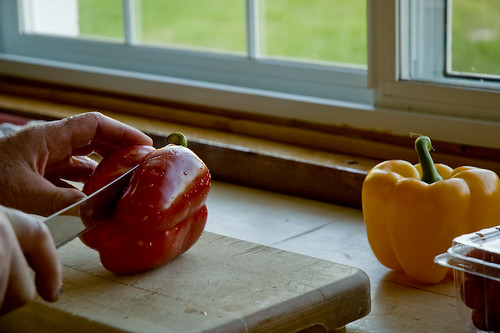
Growing sweet peppers can challenge even expert gardeners. The development of brown spots on the sweet pepper can be a particularly troublesome problem, with the most likely cause being a condition known as blossom-end rot.
Identification
Video of the Day
Blossom-end rot causes brown spots at the tip, or underside, of the sweet bell pepper. The spots begin as small watery areas and grow larger and darker, eventually forming a sunken region with leathery, withered skin.
Video of the Day
Causes
The main cause of blossom-end rot is excessive water retention due to inconsistent watering. Fluctuating soil moisture disrupts the amount of calcium in the pepper and leads to the improper water storage.
Prevention/Solution
Since the pepper's skin has no openings to accommodate direct calcium supplements or watering, blossom-end rot must be treated in the soil. Add organic material, such as peat moss and compost, to the soil to improve drainage and help regulate moisture. Mixing lime into the soil ahead of planting will help alleviate any calcium deficiencies.
Considerations
Once brown spots develop on the pepper, indicating the presence of blossom-end rot, nothing can be done to treat the pepper. All efforts must be made to prevent the condition from harming future peppers.
Warning
Blossom-end rot can lead to bacterial infection and fungi growth within the pepper.